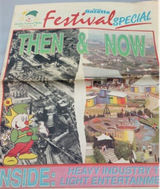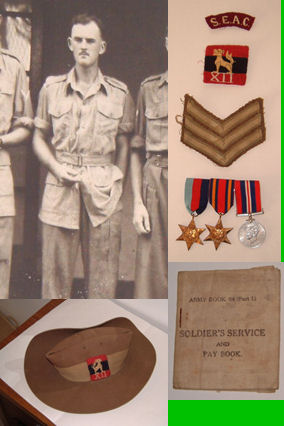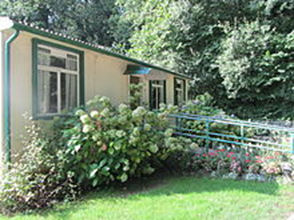Dates for your Diary
Closed until further notice.
Museum opening times
Closed until further notice.
100 Club
Draws suspended pending re-opening.
Recognize this? 
It’s a Gwent Gazette Special ‘pull-out-and-keep’ report from 1992 on the Ebbw Vale Garden Festival. This one belongs to a friend of my sister though there is a copy at the museum. To see inside the paper, visit our Facebook page.
Six Bells Colliery Disaster

© By Chris Allen, CC BY-SA 2.0
Sixty years ago on 28th June 1960, Six Bells Colliery was the site of an explosion that killed dozens of men.
The explosion took place in the West District of the Old Coal Seam and was caused by the ignition of ‘firedamp’; the name given to a flammable gas found in coalmines. Of the 48 men working on that shift, only 3 survived. Had it not been for men deployed for maintenance work  elsewhere, the death toll would have been a lot higher as ordinarily there should have been 125 men working the seam that day.
elsewhere, the death toll would have been a lot higher as ordinarily there should have been 125 men working the seam that day.
The colliery was demolished in 1989 and now the site has now been landscaped and renamed Parc Arael Griffin. Ten years ago a monument was erected on the site as a memorial to those who died.
Designed by Sebastian Boyesen, it is known as ‘The Guardian’. It stands 66 feet high (20 Metres) and is made of steel ribbons.
Article sourced from:
https://en.wikipedia.org/wiki/Six_Bells_Colliery
August 15th 1945 - VJ Day
This month marks the 75th anniversary of the Victory over Japan, and the end of the Second World War. The Germans had surrendered in May so the war was over in Europe but not in the pacific.
Japan had entered the war on 7th December 1941. With all eyes on the war in Europe and with the Japanese suffering an oil embargo at the hands of the Americans, they had taken the opportunity to launch an attack on the US air base at Pearl Harbour, Hawaii. Caught unawares, the Americans lost 18 warships, 188 planes and over 2000 personnel.
By Christmas day 1941, the Japanese had captured the British base of Hong Kong and in 1942 had invaded Singapore. By late 1942 they had captured much of South-East Asia and were threatening Australia.
However by this time, the Americans, their fleet rebuilt, were on the attack and were now the dominant force in the Pacific Ocean. The Americans began to ‘island-hop’ liberating Japan’s conquests until they reached Japan itself.
But the Japanese were fanatical fighters who would rather die than surrender and so they were very difficult to defeat and it cost many American lives. The Japanese used kamikaze (suicide) pilots to sink US warships but by mid-1945 they were in a desperate position though still refused to surrender.
Rather than lose more American lives on the ground, the Americans took to bombing Japan relentlessly from the air. The Japanese had been cut off from their food supplies and raw materials, and in Burma they were being defeated by the British (often referred to as ‘The Forgotten War’) but still they would not surrender.

Above, David Murphy together with his hat, stripes, medals and service book.
On 12th April 1945, the US President, Franklin Roosevelt, died. He was succeeded by President Harry Truman and it was he, on 26th July 1945, on behalf of the US, the UK and China delivered an ultimatum to Japan’s Emperor Hirohito. Known as the ‘Potsdam Declaration’, it demanded the unconditional surrender of Japan or we would drop a new weapon, which had been developed by US scientists, called an ‘atomic’ bomb.
However the Japanese Emperor ignored the warning and so on 6th August 1945 at 8.15am an atomic bomb was dropped on the Japanese city of Hiroshima. Over 80,000 died as a direct result of the explosion and many more would die over the coming months from the effects of radiation poisoning. Incredibly, the Japanese still did not surrender and so on the 9th August a second atomic bomb was dropped, this time on Nagasaki.
Six days later, on 15th August 1945, Japan surrendered unconditionally and the Second World War was finally over.
Pictured below is my late father-in-law, David Murphy who passed away in 2002. During the war, he served as a Sergeant in the Royal Corps of Signals in Burma.
Sally Murphy
The Prefab
Last month was the 75th anniversary of VE Day (Victory in Europe) and as we all saw on TV there was much celebration on 8th May 1945. There was a lot of hard work ahead though, not least a shortage of housing thanks, in particular, to the blitz on London and other big cities.
From as early as 1942 plans were already being drawn up to deal with the housing shortage after the war. In July 1945 a general election was held and Clement Attlee of the labour party became the new PM. He promised to build over a million new homes within 5 years and to help meet that target it was planned to use prefabricated houses which became commonly known as ‘Prefabs’.
There were different designs of prefabs; some were timber-framed while others were made of aluminium or steel. All of them though had to have a minimum floor space of 635 square feet and yet be narrow enough (no more than 7 feet 6 inches) to be transported by road.
The prefabs were built to very high specifications and although designs varied, all had two bedrooms with fitted furniture, a bathroom with a flushing toilet and a bath with hot running water supplied by a Baxi ‘back boiler’ sitting behind a fireplace which effectively gave the prefab central heating. The kitchen too was quite luxurious with a built-in oven and fridge. Prefabs had all this at a time when most traditional homes had only an outdoor toilet, no bathroom, no central heating and no fridge. It’s no wonder most residents lucky enough to get one absolutely loved their new home!
They were only ever meant to be temporary homes with a lifespan of no more than ten to fifteen years. There was concern in some quarters that they were being seen as permanent housing, prompting comedians of the day such as Charlie Chester to come up with skits such as ‘Down in the jungle, living in a tent, better than a prefab; no rent’! However they were so loved by their occupants that when the authorities tried to evict tenants to demolish them, they met with fierce resistance. Some still exist and are lived in today with at least one being lived in within the Newport area.
On average 1.75 prefabs were constructed every day in the period after the war but although it had been planned to build 500,000, only around 153,000 were actually built, partly because of the cost of the program (over £150 million). While useful, the prefab did not add greatly to the one million homes that the Attlee administration managed to build.
If you would like to see the inside of a prefab, pop along to St Fagans National History Museum (when the current health crisis allows). See photo below.
 © By Deb - Own work, CC BY-SA 3.0
© By Deb - Own work, CC BY-SA 3.0
The Aluminium Prefab at St Fagan’s.
Thanks to reader, Mary Coles, for inspiring me to research and write this piece.
Information for this article was sourced from:
https://en.wikipedia.org/wiki/Prefabs_in_the_United_Kingdom
and from St Fagans website below:
https://museum.wales/stfagans/buildings/prefab/
Land Settlement Schemes
A reference to one of these schemes in a recent newspaper article prompted me to go on-line and find out a bit more. The newspaper article in question was about Crosslands Flower Nursery in West Sussex and it mentioned that the smallholding had been set up (growing a wide range of crops then, not just flowers) by a Mr Cross from Abertillery. He had moved to West Sussex under a government scheme set up in 1936 to resettle unemployed workers from industrial areas onto rural land.
There had been an earlier scheme after the First World War for newly demobilised soldiers but the particular scheme in which Mr Cross moved was known as the Land Settlement Association, founded in 1934 by The Society of Friends and the Carnegie Trust and funded by the Government. Posters and pamphlets were distributed through employment exchanges inviting men to apply. Under the scheme, a successful applicant – who had to pass a medical examination and demonstrate that he could make a success of living on the land – was given a 5 acre smallholding, a few animals, and agricultural training. The arrangement was that groups of smallholdings would operate as a cooperative forming small communities and between 1934 and 1939 well over a thousand smallholdings were established in this way.
The element of the scheme aimed specifically at the unemployed was suspended when the Second World War broke out as there was also a need for those already skilled in food production but it resumed after the war and ran until 1983 when the scheme ended. Some smallholdings failed, the men finding themselves unsuited to rural life but others succeeded, and Mr Cross's is just such an example as it is still in existence. It is now run by Ben Cross, a great grandson of the Abertillery Mr Cross. Mr Ben Cross is a former marine biologist and so in changing course he might be said to be following his great grandfather's example although presumably for quite different reasons; the holding is entirely given over to growing flowers. I wonder if any of the original Mr Cross's relatives still live in the Abertillery area?
The Weald and Downland Living Museum near Chichester has, in recent years, dismantled and re-erected a former Land Settlement Association house which formerly stood on a smallholding plot at Sidlesham, south of Chichester.
Jen Price
Working Women
Not long ago I read a book called 'Agincourt' by Juliet Barker. It is a fascinating book which tells not just the story of the Battle of Agincourt in 1415 but also much about medieval life. One fact she makes known is that in the medieval period women were expected to work at their husband's trade. Juliet Barker notes that in February 1414 the King's smith at the Tower of London, William Mersh, was busy making guns and ironwork. His wife Margaret was a professional blacksmith in her own right who worked alongside him in the forge. She was expected to do all that her husband did – breaking up rock, working the bellows and smelting ore. Although she was paid, she normally earned only a twelfth of his wage, receiving just one penny for every shilling her husband earned. The Ordinance of Founders of 1390 stipulated that a master smith could employ just one apprentice; the only circumstance in which he could employ two apprentices was if he did not have a wife.
This was something I hadn't known but looking into the lives of women in medieval times it is clear that although most women lived in rural areas and had no opportunity for involvement in a trade, many women followed a skilled craft. In the 1300s in France (I don't know if this also applied to Britain but presumably so) women were active in many trades including barbers, shipwrights, masons, carpenters…..the list goes on. There is always something new to learn!
Jen Price
Top Of Page
